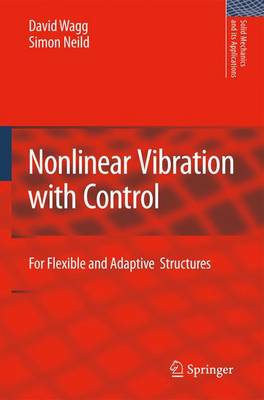Solid Mechanics and its Applications
1 primary work
Book 170
Identifying, modelling and controlling nonlinear vibrations is becoming incre- ingly important in a range of engineering applications. This is particularly true in the design of ?exible structures such as aircraft, satellites, bridges, sports stadia and other tall/slender structures. There are also applications in the areas of robotics, mechatronics,micro-electro-mechanicalsystems(MEMS),andnon-destructivete- ing (NDT) and related disciplines such as structural health monitoring (SHM). In the majority of cases, the trend is towards lighter structures, increased ?exib- ity and other higher levels of performance requirements. It is increasingly common for structuresto have integratedactuator andsensor networks to carry out tasks such as limiting unwanted vibrations, detecting damage and in some cases changing the shape of the structure. These types of structures have become knownas smart str- tures (sometimes called adaptive or intelligent structures). They are often made of new compositematerials and their ability to performmultiple tasks means that these types of smart structures are multifunctional.
Nonlinearbehaviourin structuraldynamics arises naturallyfrom a rangeof c- mon material and geometric nonlinearities. By their nature, these structures are t- ically made up of highly ?exible continuous elements such as beams, cables and plates. They are also required to operate in a dynamic environment and, as a result, understanding the vibration behaviour of the structures is critically important.
Nonlinearbehaviourin structuraldynamics arises naturallyfrom a rangeof c- mon material and geometric nonlinearities. By their nature, these structures are t- ically made up of highly ?exible continuous elements such as beams, cables and plates. They are also required to operate in a dynamic environment and, as a result, understanding the vibration behaviour of the structures is critically important.
